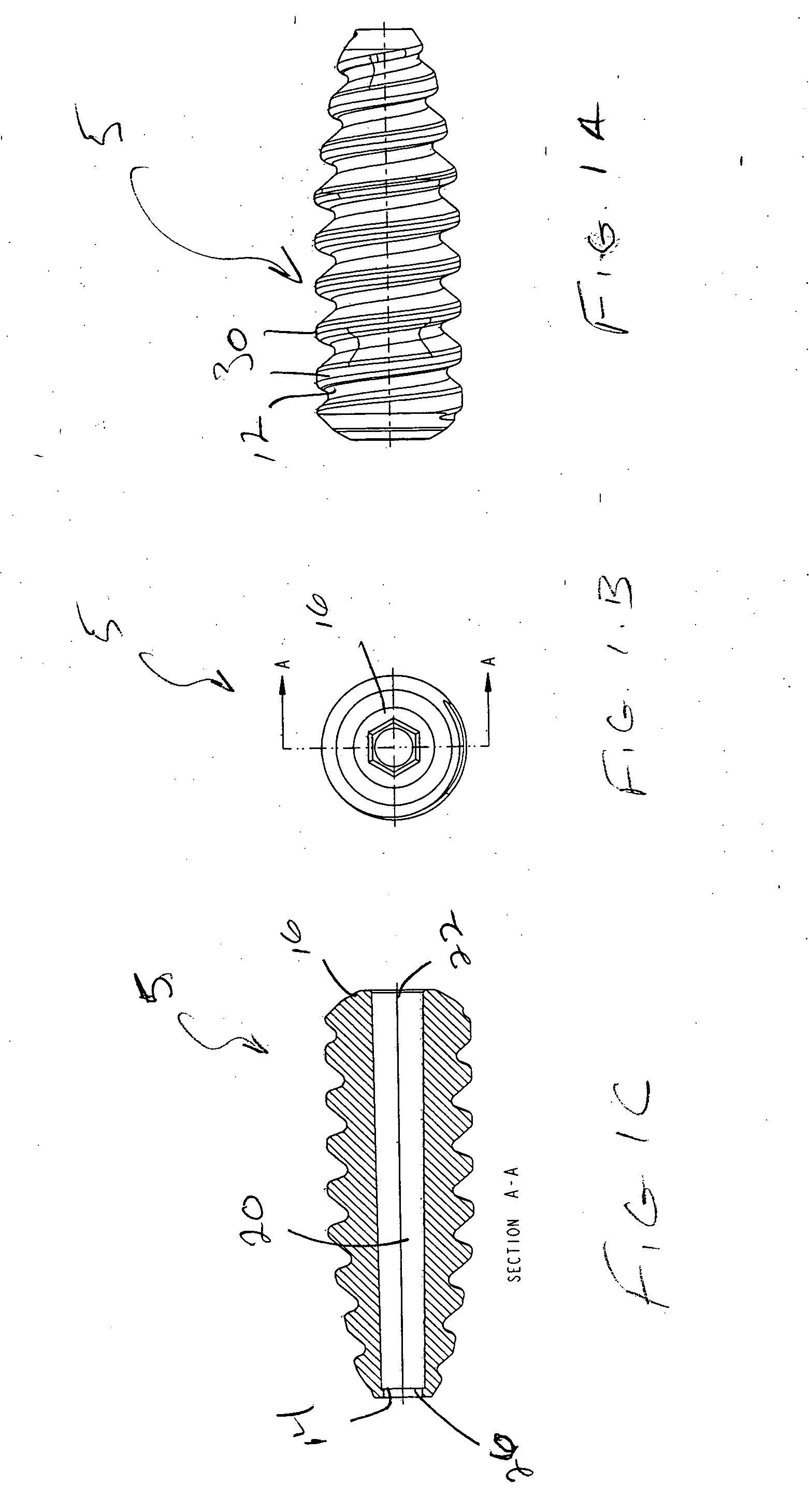Method of performing anterior cruciate ligament reconstruction using biodegradable interference screw
- Summary
- Abstract
- Description
- Claims
- Application Information
AI Technical Summary
Problems solved by technology
Method used
Image
Examples
example 1
[0044] Biodegradable composite bone pins 1 were prepared in a conventional manner and into the femurs of mammalian laboratory animals. The pins were of the following three compositions: A) composites of 15 / 85% by volume β-tricalcium phosphate and (85 / 15)poly (lactide co-glycolide); B) poly(lactide); and C) composite of 15% / 85% by volume β-tricalcium phosphate and poly(lactide). About 24 months after implantation, the animals were euthanized and histological sections were obtained. As seen in FIG. 11A, a bone pin 500 having a Composition (A)demonstrated a significant degree of absorption when compared with the original diameter indicated by arrows 505, and significant tissue (bone) in-growth. In addition, minimal tissue reaction was observed. As seen if FIGS. 11B and 11C, bone pins 510 and 520 having Composition (B) exhibited minimal absorption compared with the original diameters indicated by arrows 515 and 525, respectively. As seen in FIG. 11D, a bone pin 530 having Composition C ...
PUM
 Login to View More
Login to View More Abstract
Description
Claims
Application Information
 Login to View More
Login to View More - R&D
- Intellectual Property
- Life Sciences
- Materials
- Tech Scout
- Unparalleled Data Quality
- Higher Quality Content
- 60% Fewer Hallucinations
Browse by: Latest US Patents, China's latest patents, Technical Efficacy Thesaurus, Application Domain, Technology Topic, Popular Technical Reports.
© 2025 PatSnap. All rights reserved.Legal|Privacy policy|Modern Slavery Act Transparency Statement|Sitemap|About US| Contact US: help@patsnap.com



